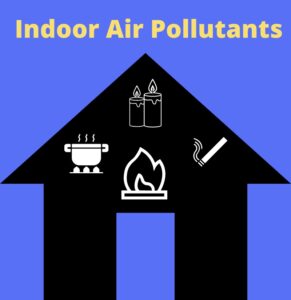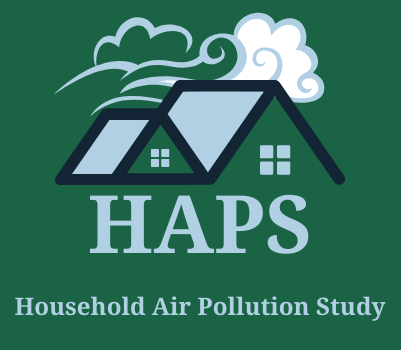 There are many different types of air pollution that can be found in the home. Below is a list of the pollutants we are measuring in HAPS.
There are many different types of air pollution that can be found in the home. Below is a list of the pollutants we are measuring in HAPS.
Particulate Matter (PM 2.5): A mix of compounds found in the air that are often small enough (mean diameter < 2.5 um) to be inhaled through the lungs which can lead to respiratory and other health problems. There are a multitude of sources of particulate matter in the home. Some of the most common forms are through soot, tobacco smoke/regular smoke, dirt and dust.
Black Carbon: Is a major component of PM2.5. Soot is mainly comprised of black carbon. Outside, black carbon component of interest in this study. Black carbon comes from wildfires, traffic pollution and combustion. Indoors, it is associated with cooking, burning candles, fireplaces and poor ventilation. Black carbon exposure has been associated with heart and lung problems. HAPS is measuring the levels of black carbon in your home and will also measure your personal exposure to black carbon using a personal monitor.
Nitrogen Dioxide (NO₂): NO2 is a gas that has been linked to several respiratory and lung problems. Nitrogen Dioxide is generated during combustion so the primary sources in the home include but are not limited to gas burning stoves, space/water heaters and tobacco smoke. HAPS will measure the level of NO2 in your home.
For more resources please visit :
- https://www.lung.org/clean-air/outdoors/what-makes-air-unhealthy/nitrogen-dioxide
- https://www.epa.gov/indoor-air-quality-iaq/indoor-particulate-matter
Sources
- Brook, R. D., Franklin, B., Cascio, W., Hong, Y., Howard, G., Lipsett, M., … & Tager, I. (2004). Air pollution and cardiovascular disease: a statement for healthcare professionals from the Expert Panel on Population and Prevention Science of the American Heart Association. Circulation, 109(21), 2655-2671.
- Giorgini, P., Di Giosia, P., Grassi, D., Rubenfire, M., D Brook, R., & Ferri, C. (2016). Air pollution exposure and blood pressure: an updated review of the literature. Current pharmaceutical design, 22(1), 28-51.
- Yang, B. Y., Qian, Z., Howard, S. W., Vaughn, M. G., Fan, S. J., Liu, K. K., & Dong, G. H. (2018). Global association between ambient air pollution and blood pressure: a systematic review and meta-analysis. Environmental pollution, 235, 576-588.
- Northcross, A. L., Hwang, N., Balakrishnan, K., & Mehta, S. (2015). Assessing exposures to household air pollution in public health research and program evaluation. Ecohealth, 12(1), 57-67.
- Rabito, F. A., Yang, Q., Zhang, H., Werthmann, D., Shankar, A., & Chillrud, S. (2020). The association between short‐term residential black carbon concentration on blood pressure in a general population sample. Indoor air, 30(4), 767-775.
- https://www.epa.gov/sites/default/files/2014-05/documents/health-effects.pdf
- Hoffmann, B., Luttmann-Gibson, H., Cohen, A., Zanobetti, A., de Souza, C., Foley, C., … & Gold, D. R. (2012). Opposing effects of particle pollution, ozone, and ambient temperature on arterial blood pressure. Environmental health perspectives, 120(2), 241-246.
